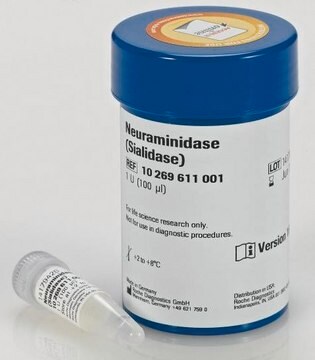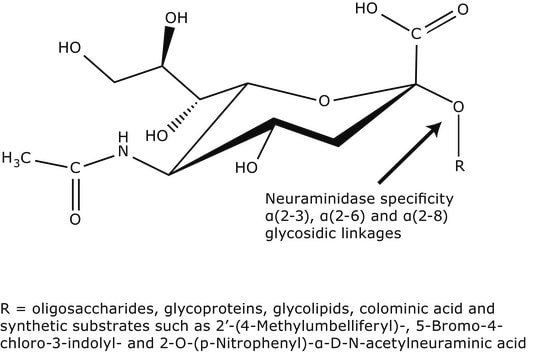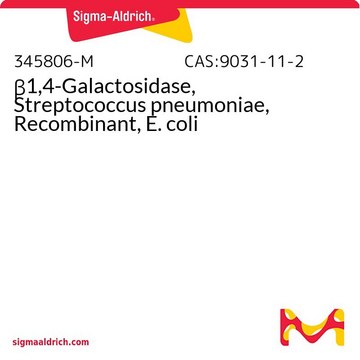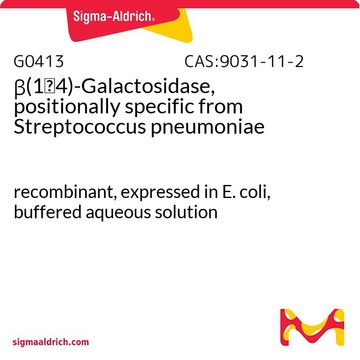Kluczowe dokumenty
N7271
α(2→3) Neuraminidase from Streptococcus pneumoniae
buffered aqueous solution
Synonim(y):
Acyl-neuraminyl Hydrolase, Acylneuraminyl hydrolase, Receptor-destroying enzyme, Sialidase
About This Item
Polecane produkty
pochodzenie biologiczne
Streptococcus pneumoniae
Poziom jakości
Formularz
buffered aqueous solution
stężenie
≥5 units/mL
obecność zanieczyszczeń
β-Galactosidase, α-mannosidase, β-hexosaminidase, α-fucosidase, and proteases, none detected
Warunki transportu
wet ice
temp. przechowywania
2-8°C
informacje o genach
Streptococcus pneumoniae R6 ... nanB(933504)
Powiązane kategorie
Działania biochem./fizjol.
Opakowanie
Definicja jednostki
Postać fizyczna
Uwaga dotycząca przygotowania
Hasło ostrzegawcze
Danger
Zwroty wskazujące rodzaj zagrożenia
Zwroty wskazujące środki ostrożności
Klasyfikacja zagrożeń
Resp. Sens. 1
Kod klasy składowania
13 - Non Combustible Solids
Klasa zagrożenia wodnego (WGK)
WGK 1
Temperatura zapłonu (°F)
Not applicable
Temperatura zapłonu (°C)
Not applicable
Środki ochrony indywidualnej
Eyeshields, Gloves, type N95 (US)
Wybierz jedną z najnowszych wersji:
Masz już ten produkt?
Dokumenty związane z niedawno zakupionymi produktami zostały zamieszczone w Bibliotece dokumentów.
Klienci oglądali również te produkty
Nasz zespół naukowców ma doświadczenie we wszystkich obszarach badań, w tym w naukach przyrodniczych, materiałoznawstwie, syntezie chemicznej, chromatografii, analityce i wielu innych dziedzinach.
Skontaktuj się z zespołem ds. pomocy technicznej








